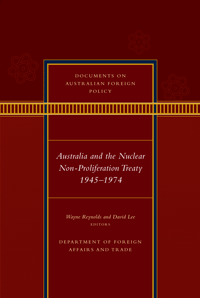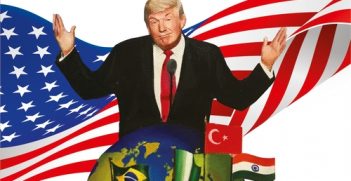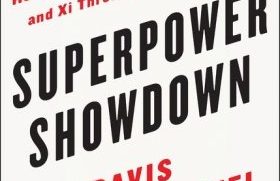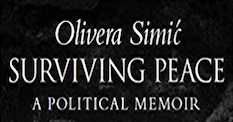Australia and the Nuclear Non-Proliferation Treaty 1945-1974

On retirement in 1998, I was given almost unreserved access by Foreign Affairs and Trade to a rich archive of documents on Australian nuclear policies. The result was my book Fact or Fission – the truth about Australia’s nuclear ambitions (Scribe 2003), a selective public spotlight at the time on Australian nuclear policies from 1945 until the early 1990s.
The Department, to its lasting credit, has now released what appears to be the whole file on the evolution of Australian nuclear policy, stretching from the beginning of the nuclear age in 1945 until 1974. Although this latter year falls well short of the 30-year rule for the release of cabinet documents, it marks the date of Australia’s ratification of the Nuclear Non-Proliferation Treaty. The result is a rich trove of Cabinet minutes, cables (many of them highly classified), official musings and material recordings in date order on the evolution of Australian policy on nuclear issues. I understand from Dr David Lee of DFAT’s Historical Publications and Information Section, one of the two editors of the volume, that later documents will soon be released.
The documents in this volume describe Canberra’s thinking about this brilliant but terrifying technology and Australia’s possible role in utilising it. But the documents are served raw, and getting across them would be an intimidating task for the lay reader wanting to gain an insight into intricate, at times contradictory, and always complex and evolving Australian policy. Fortunately, the other editor of this volume, Wayne Reynolds, a nuclear expert at Newcastle University, provides a comprehensive introduction that carefully maps the main features in the confusing terrain.
His analysis covers the main drivers that influenced policy formulation: Australia’s unrealised wish to gain a seat at the Anglo-American nuclear table, the mining of what were initially thought to be very limited uranium resources for use in early post-war British and American nuclear weapons, the genesis of Australia’s own nuclear research program and construction of a small research reactor at Lucas Heights, the debate over whether Australia should build or acquire its own nuclear weapons, the Gorton government’s reluctance to sign on to the NPT because it would inhibit nuclear weapons acquisition, its efforts to build a nuclear power reactor at Jervis Bay ostensibly for electricity generation but, in reality, to provide fuel for nuclear weapons and, finally, the advent of the Whitlam government and its wholehearted embrace of the NPT and the end of any prospect of an Australian nuclear arsenal.
Many documents, mainly cables, cover the interplay between Australian diplomats abroad and the government at home over the dangers of nuclear proliferation. These are particularly soul-searching over whether to encourage or discourage threshold countries like India in developing their own nuclear arsenals and the inter-department battles, at times quite vicious, over control of nuclear policy. A careful reading of the raw material reveals the shrewd way in which nuclear bureaucrats, particularly Sir Philip Baxter and Sir Ernest Titterton, were able to manipulate ignorant ministers into accepting their policies, particularly those that aggrandised the role of the Australian Atomic Energy Commission (AAEC), the forerunner of the more transparent Australian Nuclear Science and Technology Organisation (ANSTO).
Woven through the material is the depressing reality that the Department of External Affairs had neither the nuclear expertise nor bureaucratic clout to successfully argue with, let alone persuade, the parochial line departments in Canberra about the realities of international nuclear politics.
All this changed under Prime Ministers Whitlam, Fraser, Hawke and Keating. Australia developed strong anti-nuclear weapon credentials and was at the forefront of international movements to ban nuclear weapons testing and limit unauthorised access to weapons-grade materials and dual-use technology. To reveal the full extent of such efforts, the reader will have to wait for Dr Lee’s release of further documents from the archives. My hope is that this present volume will stimulate the reading public to want to see them.
Wayne Reynolds and David Lee (eds.), Australia and the Nuclear Non-Proliferation Treaty 1945-1974, Australian Government Department of Foreign Affairs and Trade, August 2013
Reviewed by Richard Broinowski, Adjunct Professor, University of Sydney and former Australian diplomat.





